Trialog
Katja FRIEDRICH (DE)
Marco BLÄSCHE (DE)
Stephan HÜBNER (DE)
Joachim LORENZ (DE)
Silvio THAMM (DE)
Katharina WÜNSCHE (DE)
architects
Antonin KREJCI (CZ)
Dirk STIEBELER (DE)
Artur BLAZEJEWSKI (PL)
architecture student
Europan 8 Kleines Dreieck
runner-up
Trialog stands for Czech, Polish and German cultures living together in a joint social and economic space. Three cities develop their identities and functions separately in order to complement one another even better. At the same time, connecting and networking are the main planning objectives. New paths connect the three cities. Zittau is being strengthened as a location of education and research. “Robur” becomes a “living factory” where people learn languages, sports and leisure facilities inclusive. Hrádek fascinates not only by healthy new housing but pioneers in low-energy and loam building. In Bogatynia a new centre is being developed out of old factory buildings. The vision of the future lake is already present. So far young people saunter to the mega-disco. A bus line and later the “Regiotram” will connect the night travellers and bring beach fans and strollers to the lake. At the beginning, external support and transboundary networking of the citizens and the media is crucial for initiating self-organising projects.
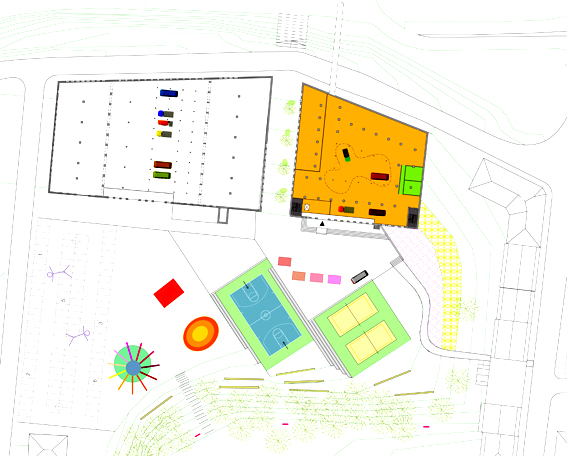
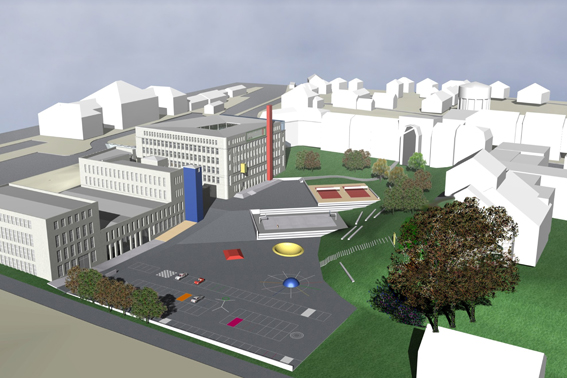
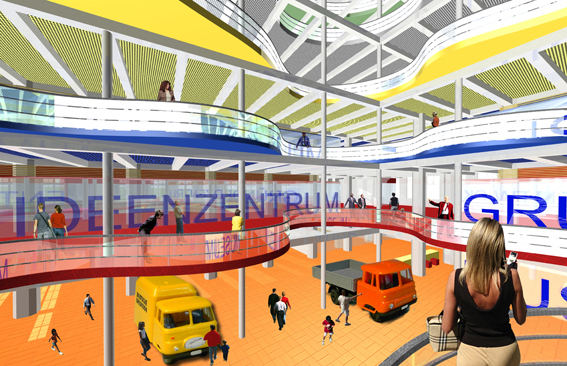
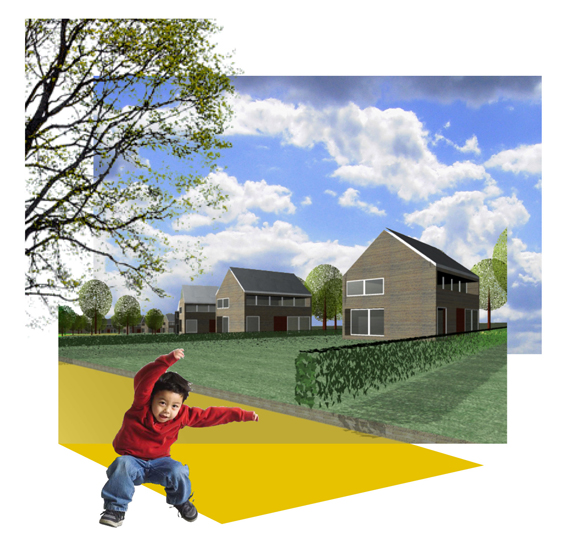
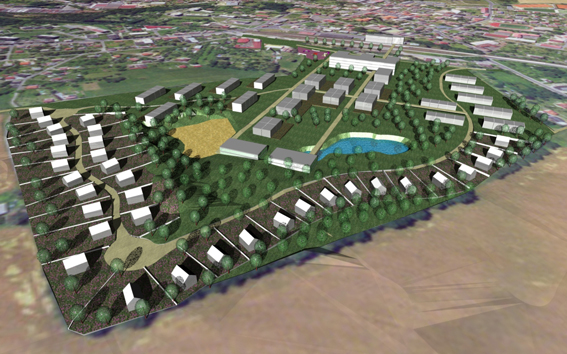
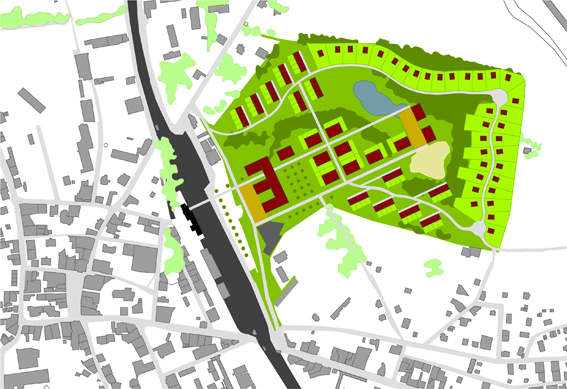
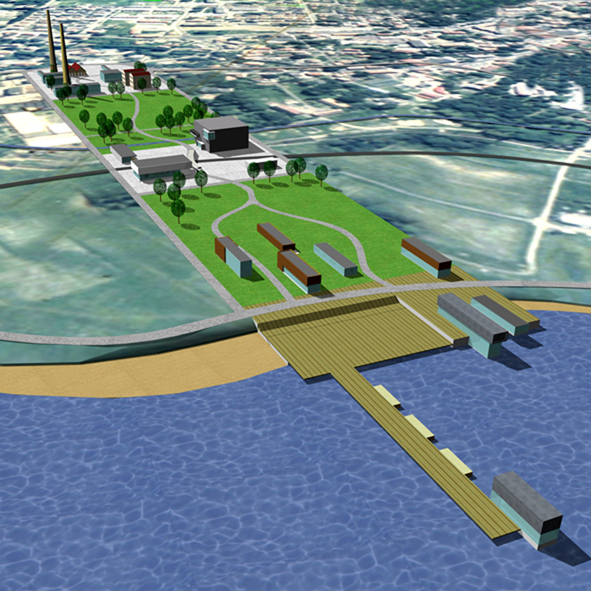
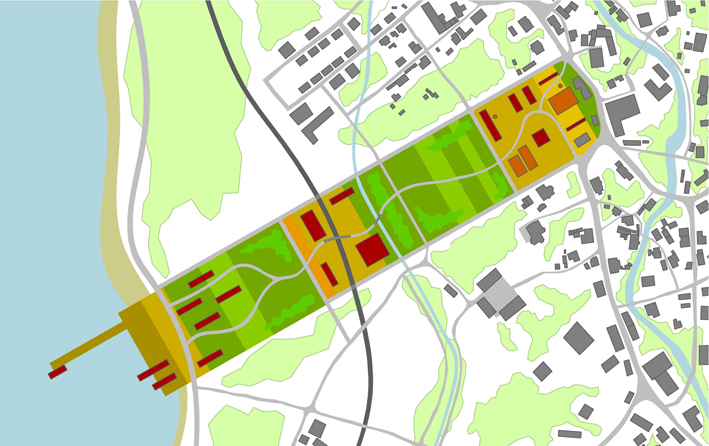
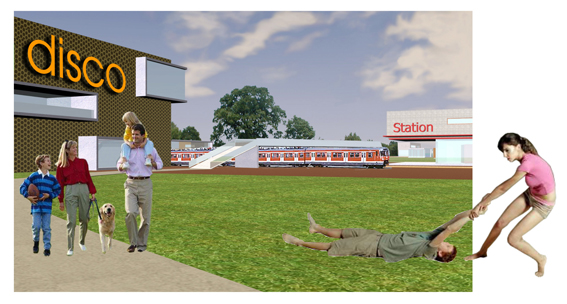
Site informations

Kleines Dreieck
Synthetic site file EN
This project is connected to the following themes
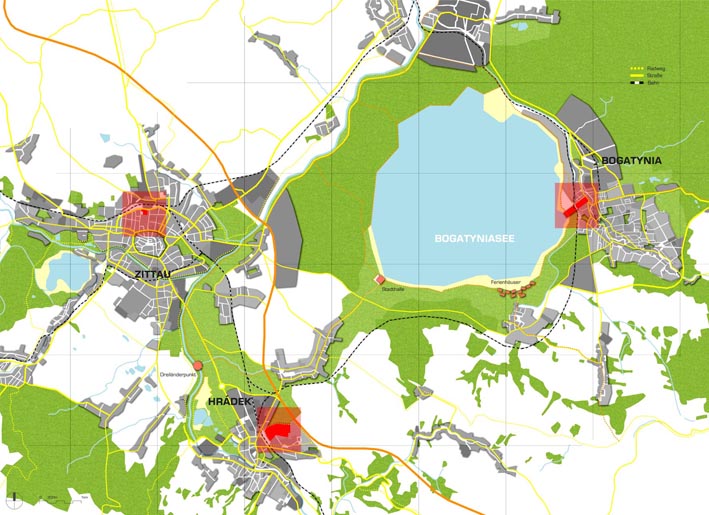
Shared spaces - Programmatic patchwork
The project idea is based on a programmatic strategy that seeks to develop the whole territory as a synergetic system of spaces shared by the three towns.

Nature - Proximity / Horizon
The three interventions take place around the parks which are in their turns connected with the territorial scale.